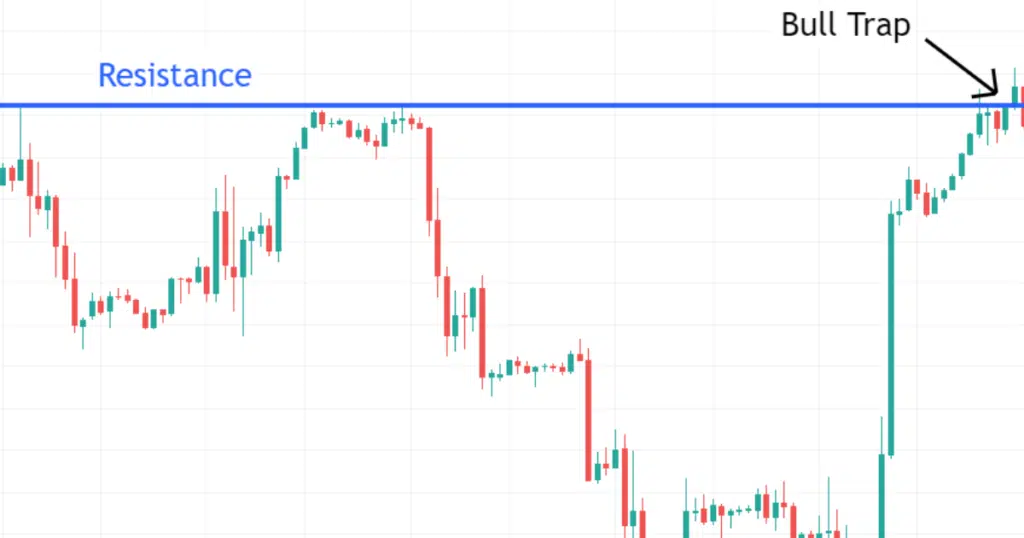Understanding Bull Traps
A bull trap, also known as a “whipsaw pattern,” is a false market signal that can occur on an asset, including cryptocurrencies, exhibiting a solid long-term downward trend.
It refers to a deceptive scenario where the value of a stock, cryptocurrency, or any other financial asset appears to be recovering or reversing after a downtrend.
However, in reality, the asset is poised to continue its decline.
This misleading signal often entices traders and long-term investors to open new long positions or increase their asset holdings.

Navigating Deceptive Price Movements in Trading
Bull traps are infamous for their deceptive nature and the adverse consequences they bring to market participants.
They are aptly named “traps” because they can catch unsuspecting traders off-guard.
Consequently, traders should exercise caution when encountering a sharp reversal in an asset’s price immediately after a breakout, a price movement below a support level.
Many retail investors, especially in cryptocurrency, expect a breakout to always lead to a more substantial price rally, but this assumption is not always accurate.
Unveiling Breakouts and Trading Signals
Technical analysis plays a vital role in the arsenal of day traders.
It involves analyzing price patterns and identifying trading signals on an asset’s price chart to forecast future movements.
One significant signal is a breakout above a resistance level, which occurs when the price surpasses a specific line that was repeatedly reached but never exceeded before.
When a breakout above the resistance level happens, bullish traders often anticipate further price increases and enter long positions.
While this expectation can be correct sometimes, a bull trap arises when the signal proves false, and the price quickly reverts to its downward trend after the breakout.
Consequently, traders who base their trades on misleading signals are trapped in unfavorable positions.
Strategies for Confirmation and Caution
Traders can employ certain precautions to avoid falling into bull traps.
One approach is to seek additional confirmation signals indicating a sustained bull run after the initial breakout above the resistance level.
Breakouts accompanied by low trading volume often warn of an impending bull trap.
Since bull traps occur when bullish traders fail to sustain the upward trend following a resistance breakout, observing low trading volumes during breakouts can be a helpful indicator.
To avoid becoming a victim of a bull trap, it is crucial to consider other factors, such as trading volume and subsequent price movements, before entering new positions after a price breakout.
Experienced market participants often refer to this as seeking “confirmations,” where traders closely monitor the asset’s movement in the next period before deciding to enter new positions.